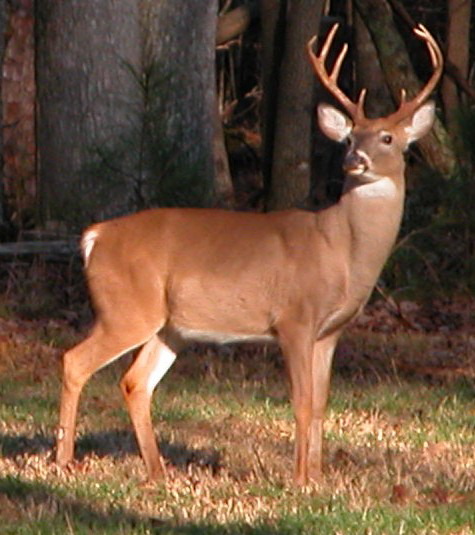|
| Distribution |
In NC, it occurs across the entire state, in all counties, though it is likely absent on a few islands.
The White-tailed Deer occurs over nearly all of the United States and southern Canada, except for most of the far western states and the Southwest. |
| Abundance |
Very common to abundant across the state, especially for such a large mammal. It is so numerous that it can sustain hundreds of thousands being harvested annually by hunters. In fact, it is often considered as a pest, at least in some areas. |
| Seasonal Occurrence |
Occurs year-round, easily visible at any time of year. |
| Habitat |
Generally in forested areas for sleeping, breeding, and some foraging. However, it moves into fields, yards, and other open areas to forage at night. Deer favor bottomland hardwoods, but most any forest will suffice, at least with moderate to somewhat dense cover of shrubs and understory trees, and a moderate herb layer (for food).
See also Habitat Account for General Mixed Habitats |
| Behavior |
Primarily crepuscular and nocturnal in their foraging and other activities, typically resting in cover during the day. |
| Comments |
White-tailed Deer need no introduction. Most people see them weekly or monthly, at least if they live or drive in the country, especially driving at night. Deer are notorious for over-browsing herbaceous and low woody vegetation in some parks and other protected areas, causing local extirpations of plants and certainly impacting small animals that feed on herbaceous vegetation or use such vegetation and shrubs for cover. Deer also are pests in yards and gardens, eating plants in yards. |
| Origin |
Native |
| NC List |
Official |
 State Rank State Rank |
S5 |
| State Status |
|
 Global Rank Global Rank |
G5 |
| Federal Status |
|
| subspecies |
Odocoileus virginianus virginianus |
| other_comName |
|
| synonym |
|



